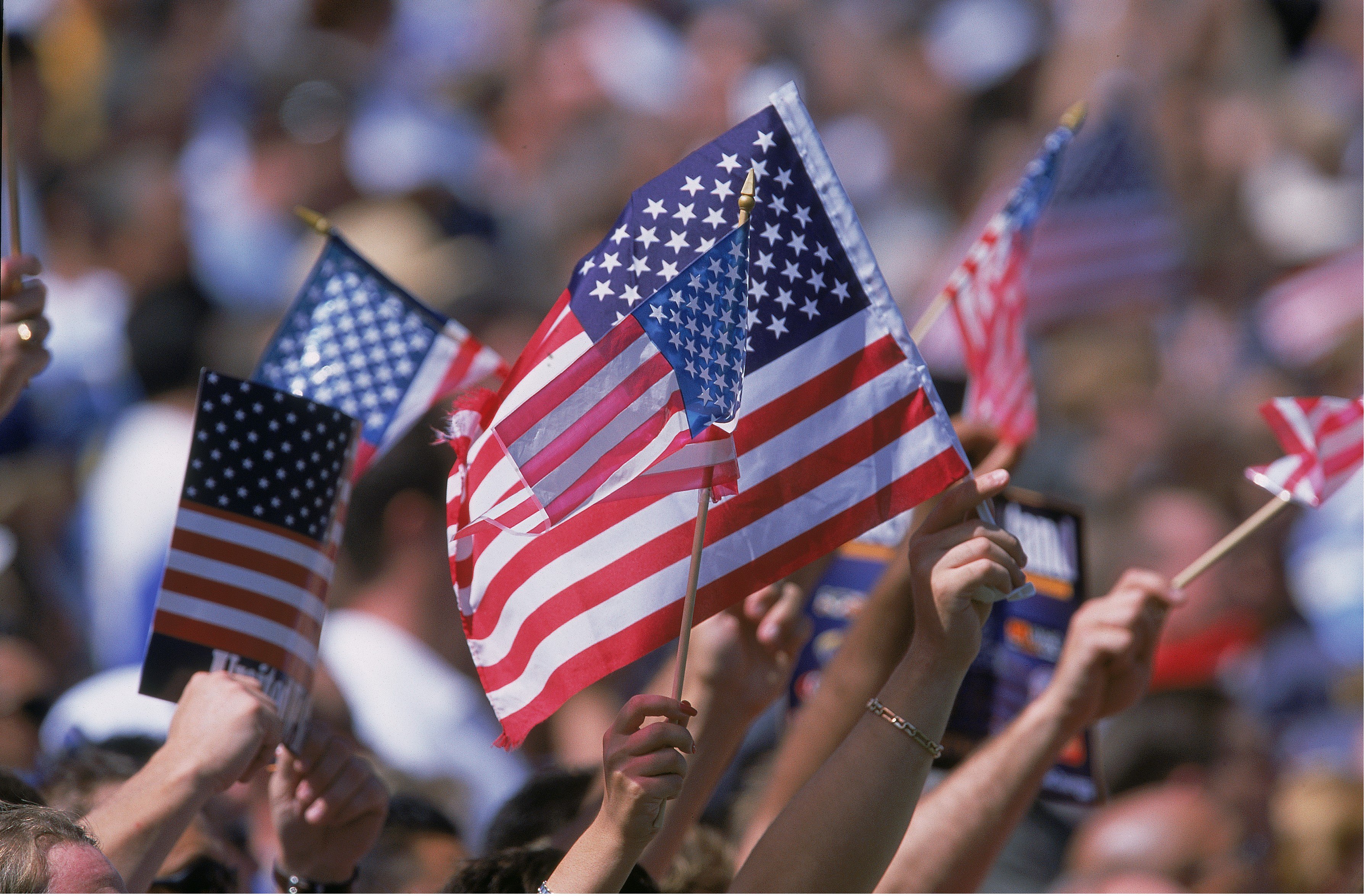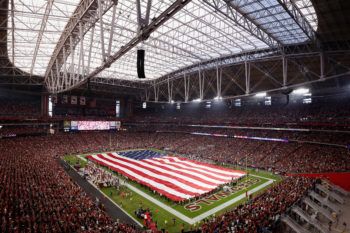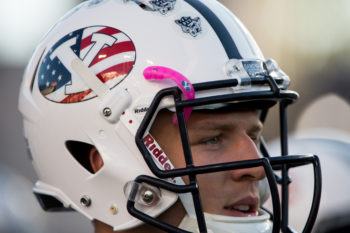
What Does It Mean To Disrespect The U.S. Flag?
In 1989 an artist by the name of Dread Scott, created a piece of art which was simply an American flag set on the ground at the Art Institute of Chicago. It invited you to stand on it and record whatever you felt about the experience in a journal.
One of the most powerful statements written in this journal, in essence, said:
“Why are we so OK with homeless people being on the ground, but not flags?”
As Flag Day approaches, we as Americans collectively stop to appreciate the stars and stripes as our strong national symbol and what it means to us as a nation. Our flag is amazing and truly unique among all other nations as ‘Ol Glory’ has changed more than any other flag in the world, 32 times, and yet we are one of the youngest countries on the planet.
It also has one of the longest list of rules around its use known as the U.S. Flag Code.
The Flag Code
Most of us grew up knowing not to let a flag touch the ground, along with many other customs; that is why Scott’s piece of art was very controversial at the end of the 1980’s and still to this day.
In fact, it was this art piece that partially led to a landmark Supreme Court decision in 1990 that established the U.S. Flag Code as just a guideline, not an enforceable law.
Now you cannot be punished for placing a flag on the ground, burning a flag, or wearing one as a bikini. And that is a good thing, not just for your first amendment rights, but because we break the flag code literally every day.
Before we go any further, I must state that I am a published vexillologist and a member of the North American Vexillological Association, so I think and care about flags more than most people. So I find it fascinating, if not hilarious, which parts of the U.S. Flag Code people break and which parts they decide to follow (and usually take way too seriously).
We all remember the controversy around Colin Kaepernick and other NFL players kneeling during the national anthem. This breaks the U.S. Flag Code Title 36, Subtitle I, Part A section 301, which states: “(C) all other persons present should face the flag and stand at attention with their right hand over the heart…” It’s a clear violation, but totally legal.
Yet during the same anthem, sometimes in the same stadium, often a giant flag is spread over the field and held parallel to the ground by a host of volunteers.
This act violates subsection 8. “Respect for flag” Part C which reads: “The flag should never be carried flat or horizontally, but always aloft and free.” A few minutes later when the teams run out, you’ll sometimes see the flag as part of their uniform. Another clear violation. Part J reads: “No part of the flag should ever be used as a costume or athletic uniform.”
It’s a good thing that the police cannot prosecute flag code violations. They’d have to pull over every car with the sticker of a black and white flag with one blue stripe known as the “Blue Lives Matter Flag.” As you’d expect, the code states that changing the flag in any way is not allowed. Every business using the flag to advertise, sorry, they’d face a fine. Unfortunately for used car lots, using the flag to advertise is clearly forbidden.
Why the fuss?
Behind all these pedantic rules lies a deep purpose that the flag code is trying to protect. Nations are nothing more than a fragile collective idea. Flags are sometimes the only tangible symbol of that idea and the only representation of that collective identity and the collective self.

“Our unity is sometimes only held together by literal threads.”
The U.S. Flag Code is meant to harness and preserve the power of the symbol while also preserving your freedom to break it. In this way, the United States, and its flag, are so unique.
Unity By Design
The flag of the United States was designed to change. We change it because it is a living symbol of our individuality, our diversity and our unity. Every time a new state is created, the flag code states “…one star shall be added to the union of the flag; and such addition shall take effect on the fourth day of July…”
Our flag is an incredible symbol because it is meant to change with us. By design and by law it is meant to grow as we grow as a nation. We have a gift in America to have a flag that is inclusive by design.
I strongly agree with the statement of that person who wrote in Dread Scott’s journal. We should never value a piece of cloth over an actual human life. We should respect our flag, of course, but we should never value the symbol over the thing it symbolizes: a diverse but united group of people who are constantly growing and changing. The U.S. flag’s design specifically left the borders of its jurisdiction open ended.
So what offends me the most as a flag researcher is when people decide who is represented by the flag and who isn’t — when they use it as an identity weapon against a self-defined out-group. Kneeling for the anthem, letting the flag touch the ground, all of those things just break an unenforceable guideline. Changing the flag’s meaning to represent something other than unity, however, is a desecration of the flag’s intent, purpose and design.
This Flag Day, take a second to marvel at our ever-changing, living symbol we treasure as a nation. The design of our flag is the perfect symbol for our country and why it has become so scared. It is the ultimate tool of unity because it always has room for more stars.
Michael Green is a published vexillologist, author of the blog “Branding The Nations”, and a member of the North American Vexillological Association. He recently gave a talk on flag design and national symbols at TEDxTAMU, is an adjunct professor, and staff member at Texas A&M University.





